An article takes you to understand hydrogen storage cylinders,Type III and IV cylinders
10 October 2023Type III Carbon fiber wound metal lined composite material high-pressure hydrogen storage vessel:
Carbon fiber wound metal inner liner composite material high-pressure hydrogen storage vessel is a type of high-pressure vessel composed of metal and non-metallic materials. Its structure is a reinforced structure formed by wrapping various fibers around the metal inner liner after solidification.
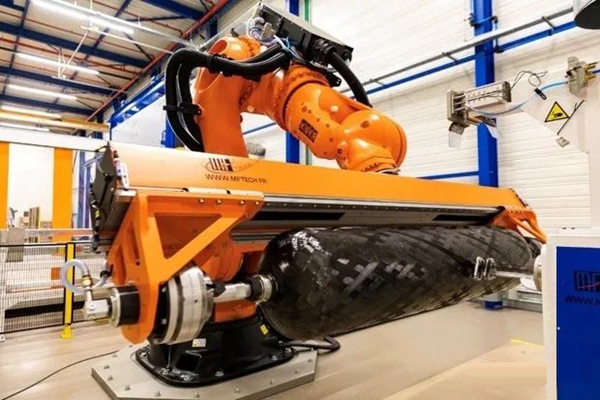
The basic requirement for the lining of high-pressure hydrogen storage containers is strong hydrogen permeation resistance and good fatigue resistance. The density of general metals is relatively high. Considering various reasons such as cost, reducing the self weight of containers, and preventing hydrogen permeation, the metal lining is mostly made of aluminum alloy, with typical grades such as 6061. According to the US DOT-CFFC standard, the lining materials mainly have the following regulations:
1.Must be a seamless column made of aluminum alloy 6061, with annealing condition of T6
2.It can be made by cold extrusion or hot extrusion and cold drawing, as well as by extrusion pipes and dies or rotating heads
3.Before testing, all aluminum alloy 6061 columns must undergo solid solution heat treatment and aging heat treatment, and must be lined with materials with uniform performance
4.The outer surface of the lining must prevent electrochemical corrosion caused by contact between different materials (aluminum and carbon fiber)
The fiber winding layer can be selected from carbon fiber, aramid fiber, glass fiber, etc. Taking carbon fiber as an example, the main technical parameters of T700 carbon fiber produced by Dongli Company in Japan are: tensile strength σ B=4900MPa, elastic modulus E=240GPa, elongation δ = 2.0%. Density d=1.78g/cm3.
Epoxy resin is often used as a matrix for carbon fibers, characterized by:
1.The curing shrinkage rate is low, only 1% -3%2.Low curing pressure and basically no volatile components
3.Good adhesion
4.The cured resin has good mechanical properties, chemical corrosion resistance, and electrical insulation properties
Epoxy resin can be used to manufacture various fiber reinforced composite materials, especially suitable for manufacturing carbon fiber reinforced composite materials
High pressure hydrogen storage containers made of fiber wound metal lined composite materials are designed based on the selection of materials, hydrogen storage capacity and pressure requirements, and thickness design schemes for each part. The final determined system hydrogen storage density varies. Taking a 25L carbon fiber reinforced aluminum lined high-pressure hydrogen storage container at 70MPa room temperature as an example, its system mass hydrogen storage density is 5.0%.
Type IV Fully composite plastic hydrogen storage vessel:
In order to further reduce the self weight of high-pressure hydrogen storage vessels, improve the hydrogen storage density of the system, and reduce costs, the metal lining was replaced with a plastic lining. Other structures and manufacturing processes are basically the same as those of metal lined composite material pressure vessels, and the fourth generation fully composite plastic high-pressure hydrogen storage vessels have been developed. The manufacturing difficulty of this composite plastic high-pressure hydrogen storage container is relatively high.
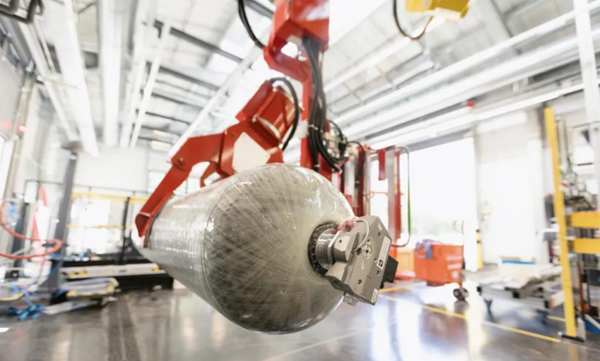
In 2015, Toyota Mirai went public and its 70MPa high-pressure hydrogen storage tank was lined with a three-layer composite material. The inner layer is a plastic lining that seals hydrogen gas, the middle layer is a carbon fiber reinforced resin layer that ensures compressive strength, and the surface layer is a glass fiber reinforced resin layer that protects the surface.
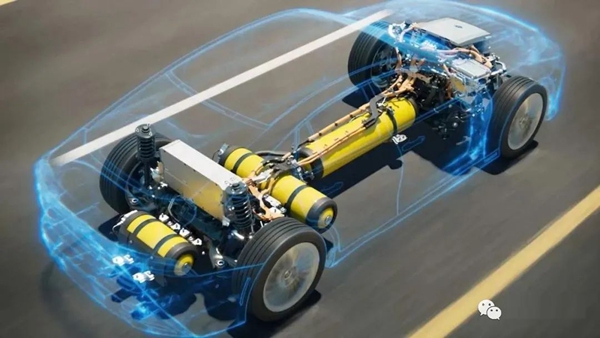
The lightweight of Mirai's hydrogen storage tank is aimed at the middle layer. The middle layer adopts a fiber winding process of applying tension to carbon fibers soaked in resin to roll up and stack them. Through special winding methods, the number of fiber winding coils is reduced, resulting in a 40% reduction in the amount of carbon fiber reinforced resin layer compared to the original. The mass hydrogen storage density of Mirai's 70MPa high-pressure hydrogen storage tank reaches 5.7%, and the volume hydrogen storage density is about 40.8kg/m 3.
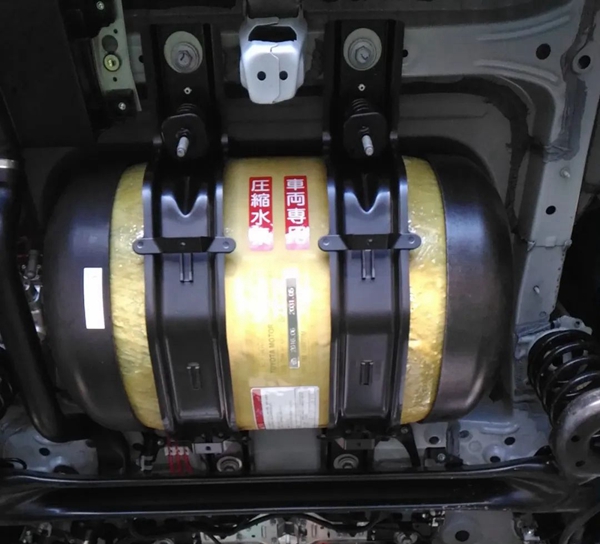
Comparison between metal lining and plastic lining:
Metal lined and plastic lined composite high-pressure hydrogen storage containers are only different in lining materials, and other structures and manufacturing processes are basically the same. Each of the two lining materials has its own scope of application. Traditional composite high-pressure vessels use a metal inner lining (usually aluminum alloy), and the outer layer is made of high-strength fiber composite materials wrapped horizontally and vertically, or spirally. The technology of metal lined high-pressure vessels has gradually evolved from metal pressure vessels and has a history of several decades.
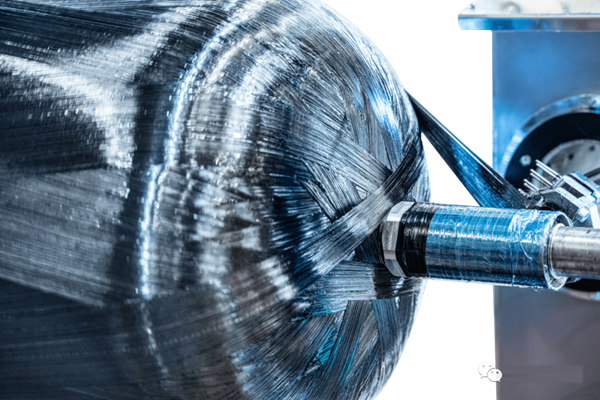
Taking aluminum alloy as an example for metal lining and high-density polyethylene as an example for plastic lining, the advantages and disadvantages of the two lining materials are compared as follows:
Advantages of aluminum lining:
1.The general aluminum alloy lining is formed by spinning, and the overall structure is seamless, which can prevent leakage
2.Due to the inability of gas to pass through the aluminum alloy lining, gas cylinders with such lining can store gas for a long time without leakage
3.After using a composite material winding layer outside the aluminum alloy lining, the applied fiber tension causes the lining to have high compressive stress, thus greatly improving the gas cylinder's air pressure cycling life
4.The aluminum alloy lining is stable over a wide temperature range. When high-pressure gas is rapidly released, the temperature drop can reach over 35 ℃, while the aluminum alloy lining is not affected by this temperature fluctuation;
For composite gas cylinders, the use of aluminum alloy lining has good stability and collision resistance
5.Generally speaking, aluminum alloy lining has much stronger damage resistance than plastic lining
Disadvantages of aluminum alloy lining:
1.Aluminum lining for composite materials is usually expensive, and its price depends on the specifications
2.The research cycle for the new specification lining is long
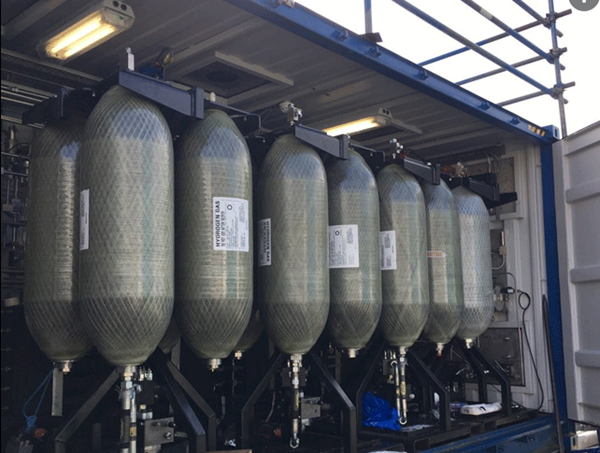
1.Lower cost compared to metal lining
2.High pressure cycling has a long lifespan, and composite gas cylinders with plastic liners can work more than 100000 times from 0 to service conditions
3.Corrosion prevention: Plastic lining is more corrosion-resistant than metal lining
Disadvantages of plastic lining:
1.Hydrogen leakage is prone to occur through the joint. It is difficult to obtain a reliable seal between the plastic lining and the metal joint, and high-pressure gas molecules are easily immersed in the plastic metal joint. When the internal gas is rapidly released, a great expansion force will be generated. Due to the difference in thermal expansion coefficient between plastic and metal, the bonding force between metal and plastic will be weakened with prolonged use. Under constant load conditions, the plastic will eventually tend to protrude or sag, leading to hydrogen leakage
2.Low resistance to external forces. Due to the fact that the plastic structure does not enhance or enhance the stiffness of the fiber winding layer, it is necessary to enhance the thickness of the external reinforcement of the gas cylinder
3.Plastic lining is sensitive to temperature
4.The plastic lining has low stiffness. This causes significant deformation of the container during the manufacturing process, which increases the additional stress during operation and reduces the pressure bearing capacity of the container
The choice of metal lined or plastic lined composite hydrogen storage containers should be determined based on specific usage conditions. However, at present, the domestic hydrogen vehicle market is mainly dominated by Type III 35MPa hydrogen cylinders, with Type III 70MPa hydrogen cylinders accounting for only a small market share. Due to regulations and standards limitations, the IV type hydrogen cylinder is still in the prohibited stage in China, but is becoming a research hotspot.



